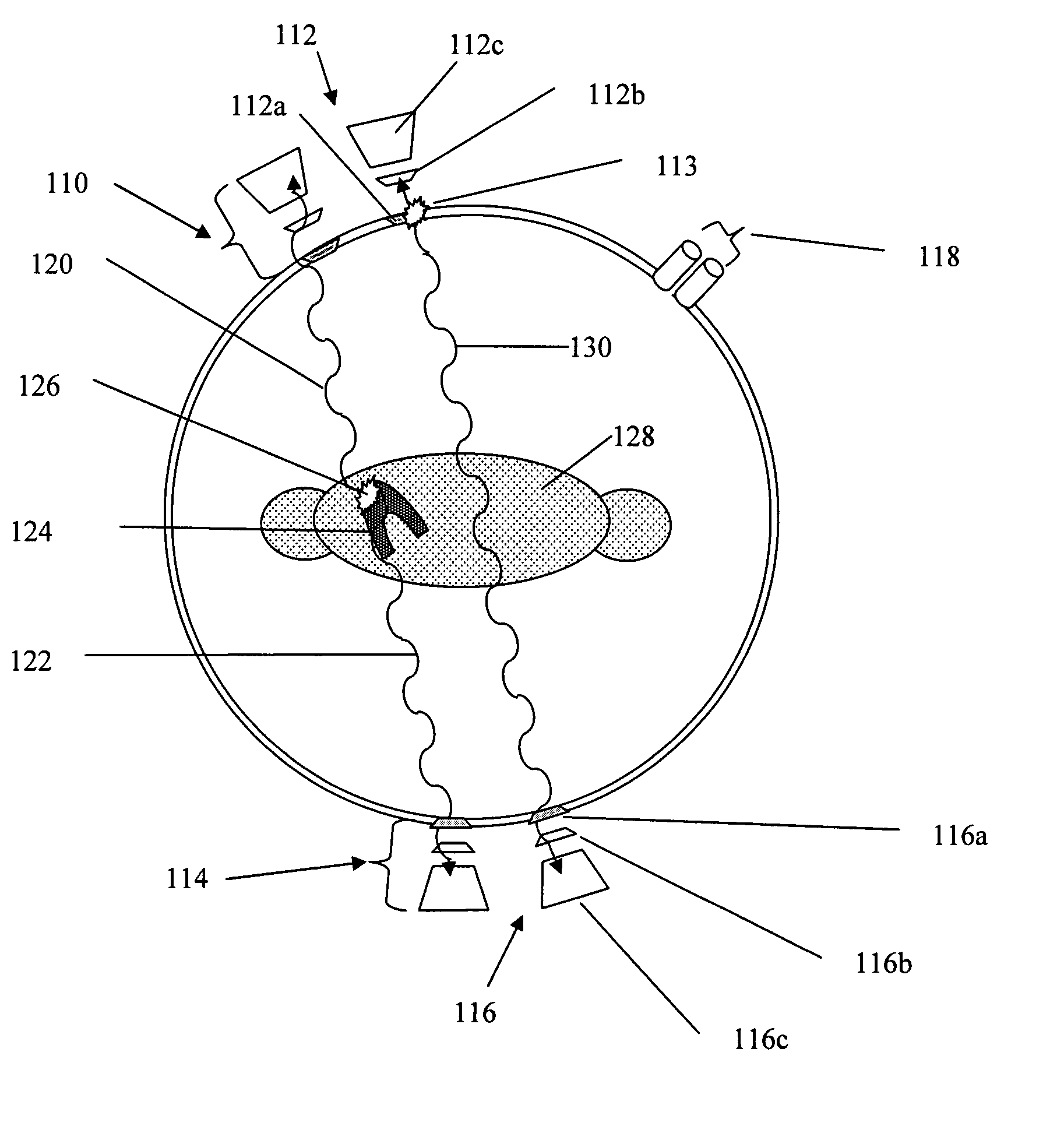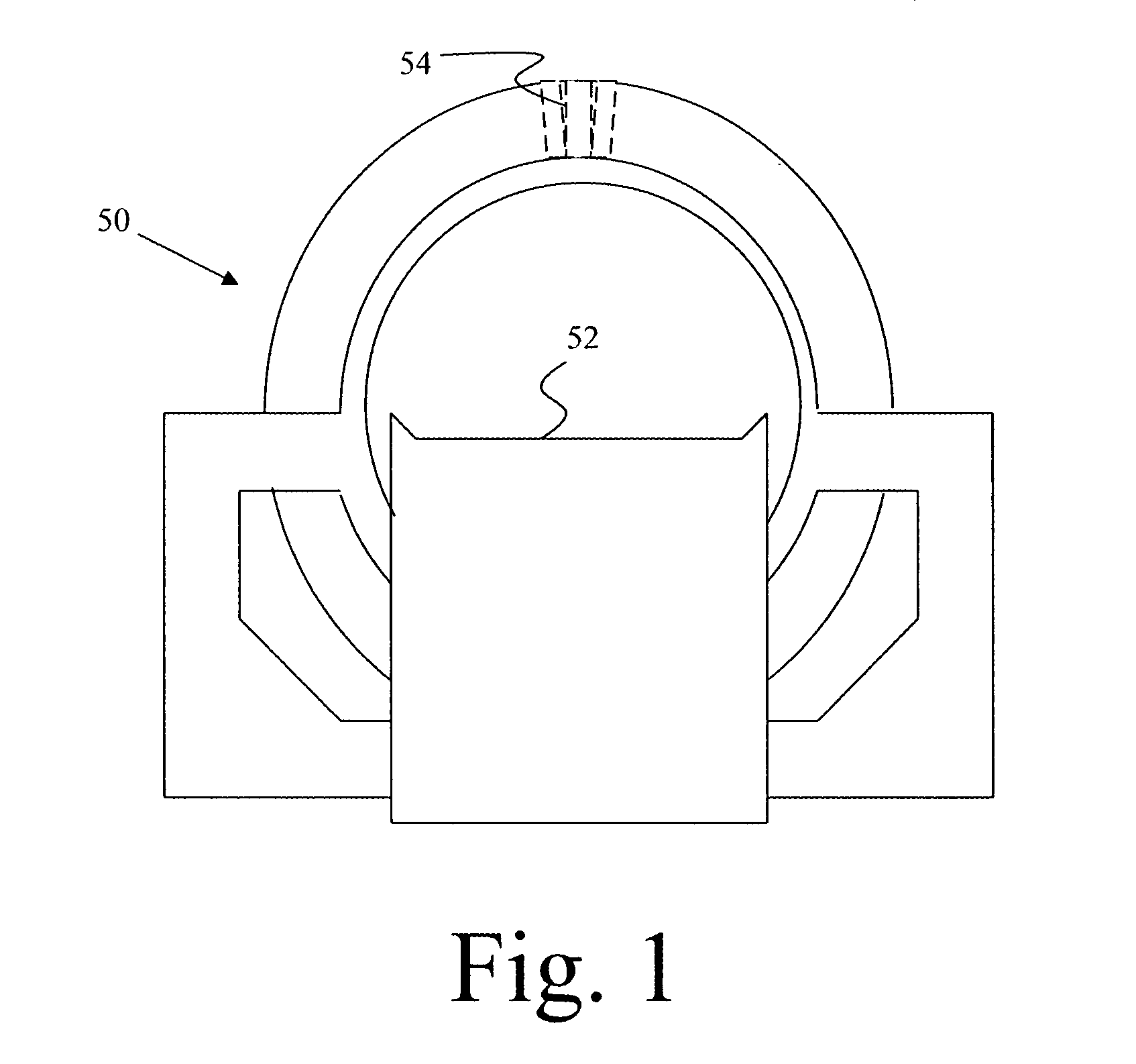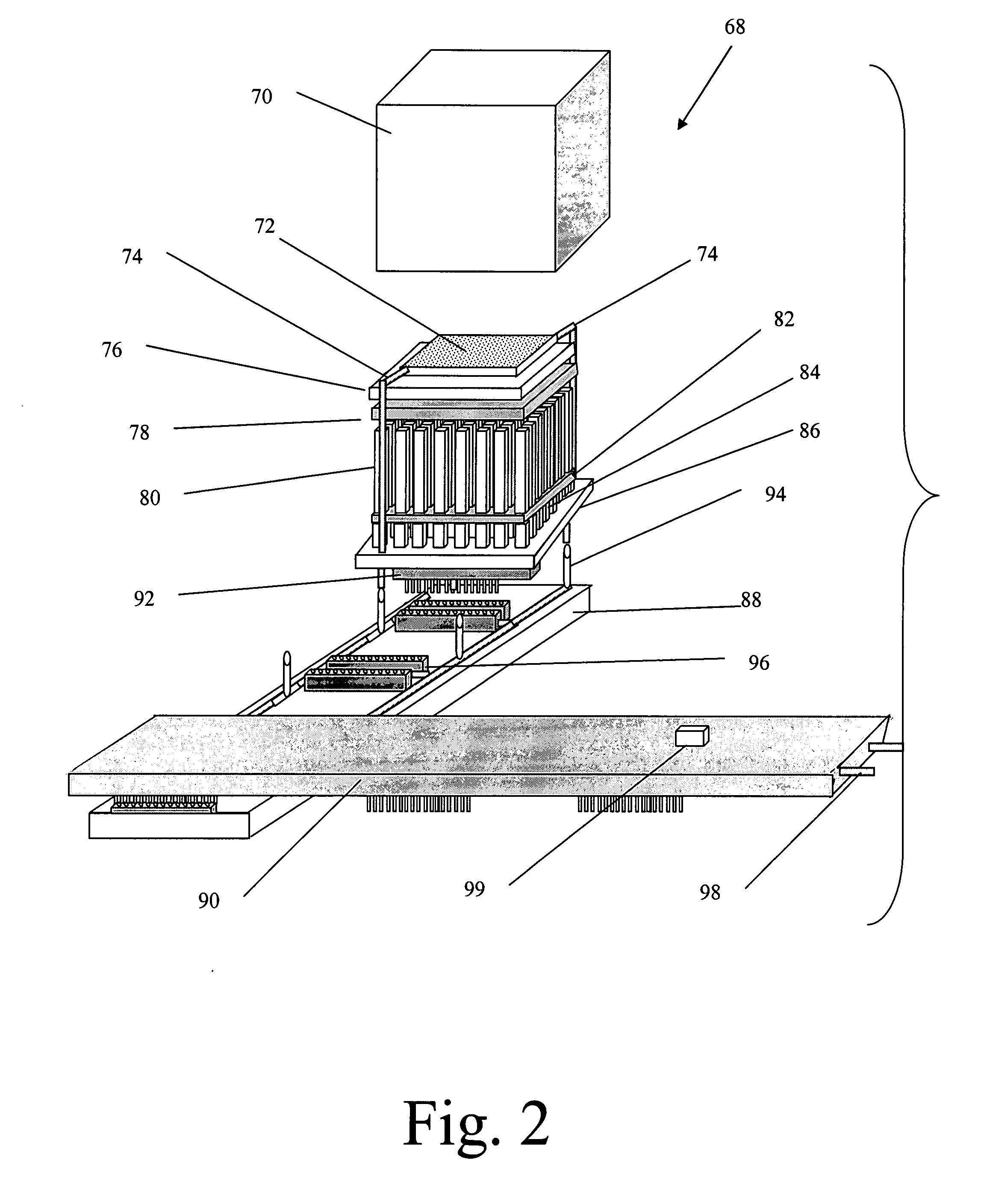There have been theoretical studies suggesting that a double-
detector method (so-called
Compton camera) could be used to determine the
direction vector of the
gamma ray, but it is believed by applicant that no such systems have yet been constructed for clinical use.
Additionally, Compton cameras typically ignore events with low angular scatter because the gamma-
ray detectors employed in Compton cameras have difficulties measuring the low energy losses associated with low angular scatter.
The influence of attenuation is a problem that impairs both PET and
SPECT imaging.
As a consequence, attenuation causes PET and
SPECT imaging apparatus to detect none or only a fraction of the original radioactive
signal produced by the gamma rays, and may therefore lead to an incorrect estimate of the distribution of radioactive material in the body.
Attenuation scans acquired by conventional apparatus and methods have proven problematic in the correction of attenuation effects on an emission image.
PET scanners that employ rotating radioactive rods or a beta-
detector-and-source
assembly to generate an attenuation map have limited spatial resolution and count density.
These limitations typically result in the generation of an anatomic image that is inferior to the images generated by rotating x-
ray tubes.
Furthermore, the rotating sources do not acquire a complete sampling of the attenuation of the body part at all times, because the rotating sources only have a limited number of views of the body part at any instance.
Additionally, in cases where the body part is in rapid motion, or where instruments or objects near the body part are in rapid motion, it can be difficult to correlate or “register” an attenuation
transmission scan image of the body part with the emission image when the two sets of images are collected at different detection periods, that is, non-contemporaneously.
However, problems may arise with
software correction of the misaligned images when the subject exhibits or is prone to various irregularities, such as non-regular
breathing or
cardiac dysrhythmias, in which body motions are not regularly repeated.
Such irregularities may result in emission and transmission images that capture images of the body part, e.g., heart or diaphragm, in different positions that cannot be correctly registered with one another without resulting in the production of artifacts.
The photomultipliers of the PET scanners are expensive, and the quadrant sharing of photomultipliers lowers expense.
However, the
scintillator block design imposes constraints on the member components.
As a consequence, the photosensors would be unable to distinguish individual gamma-ray detection events from one another, and the block effectively would be paralyzed during high rates of gamma-ray emission.
Single crystalline
scintillator materials are relatively expensive, especially compared to sintered
scintillator materials.
(a) Physical size: the amount of
lead shielding needed to shield a photosensor / scintillator combination from extraneous sources of radiation is generally proportional to the volume of the photosensor. As a result, large photosensors require more shielding, which adds to overall cost and size of the
medical device.
(b) Fabrication costs: photosensor cost represents a significant fraction of the expense associated with the
medical device, and therefore is desirably minimized.
(c) Bias
voltage: a low bias
voltage is important, especially for interventional devices (e.g., intra-operative cameras), in order to reduce the possibility of
electric shock to a patient.
(e)
Linearity, energy resolution, and
dynamic range: provide accurate measurements of the gamma-ray energy absorbed by the scintillator. High accuracy measurements permit discrimination between gamma-rays that have been scattered within a patient's body and gamma-rays that have not been scattered within the patient's body. The scattered gamma-rays provide less reliable information about the distribution of gamma-ray sources in the patient's body than the unscattered gamma-rays.
(f) Rise and decay times: short decay (
recovery) times are important in order to reduce pulse
pile-up high gamma-ray environments, such as in cardiac scans with short-lived radioisotopes (e.g., Rb-82). Short rise times help to accurately measure the
arrival time of the gamma-ray at the
detector, which is of particular interest in
PET scanner operations, where locations of
gamma ray emissions are determined by the coincident detection of gamma rays by a pair of detectors.
However, operation of the SPAD in breakdown mode results in loss of
linearity for events in which multiple light photons are absorbed, because the current produced by the breakdown
discharge is independent of the number of photons absorbed.
Due to a
reverse bias that is applied to the micro-
cell, a drifting
electron can generate a large number of
electron-hole pairs via an avalanche process, resulting in break down of the micro-
cell.
A drawback to the use of the resistive layer or other type of resistive and
quenching elements over radiation-sensitive areas is that the
resistive element attenuates and thereby reduces detection of certain frequencies of light, especially UV light, thereby limiting the efficiency of the photosensor.
 Login to View More
Login to View More  Login to View More
Login to View More 


